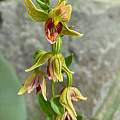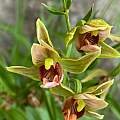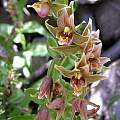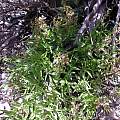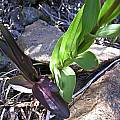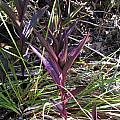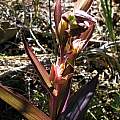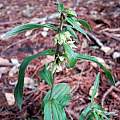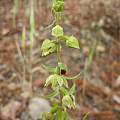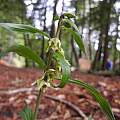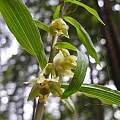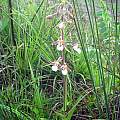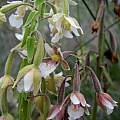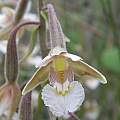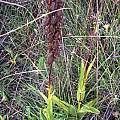Epipactis is a terrestrial orchid genus in the Orchidaceae family.
Epipactis gigantea grows from a rhizome that gradually expands and therefore can be included in our wiki. It has a common name of stream orchid and it is one of the easier orchids to cultivate. It is native to the Pacific states of the United States where it is found in year round seeps or at the margins of springs, streams, and lakes. It needs good drainage and year round water and dappled shade. It can be grown in a container, but should never be allowed completely to dry out even when dormant. Although it grows in areas with winter rainfall, it does not appear until spring and then flowers in the summer. The first two photos from Calflora were taken by Amber Bedgood in Ventura County, California, and shared under a CC BY-NC license. Photo 3 was taken by Michael Patterson (contributed by Kathleen Sayce) of a dark colored form on Svensen Island, Columbia River, Oregon. Photo 5 is of roots on a 10 mm grid by David Pilling.
Peter Baye and Karen Wilkinson took the first four photos in the Gualala River watershed in Sonoma County in 2012 and 2024. The last two photos from Bob Rutemoeller were taken in a similar location. During the winter it is likely occasionally covered with water when the river is high, but the water had retreated and it was blooming in July 2003.
In a serpentine area of Northern California called The Cedars there are specimens known as forma rubrifolia with purple leaves. Photos by Bob Rutemoeller in habitat showing the two colors of leaves and one just of the purple leaves. Cultivars 'Serpentine Night' and 'Serpentine Candy' were probably originally selected from this geographic location.
Epipactis helleborine (L.) Crantz is a rhizomatous geophyte that is native to northwest Africa and much of Europe and Asia. It was introduced into Canada and North America and has naturalized in the Northeastern United States and other areas of the continent. Leaves can be white, green, or pink. Sepals are green, often purple tinged or striped and the side petals and lip are white to pink outside and brown to purple inside. Photos from Mary Sue Ittner of plants growing along the road in mixed evergreen forest on the MendocinoSonomaCoast, California.
Epipactis palustris or Marsh Heleborine is native to vast areas of Europe and Asia, stretching from south Scandinavia to Greece and from Northern Spain to Siberia. As the name suggests, it prefers rather wet soil. It emerges in spring from its rhizome and flowers in June to August, depending on location. The pictures by Martin Bohnet shows it in habitat near Venice, Italy, just behind the dune zone, flowering in June and with ripe seed capsules in September. The location suggests the species can deal with an substantial amount of salt.
Hybrids
Epipactis 'Passionata' is a commercially available hybrid of the white form of Epipactis palustris and E. royleana, inheriting strong upright growth from the former, and pink, bigger flowers from the latter. It does well in normal, not too dry garden conditions in half shade. The pictures show a plant in cultivation by Martin Bohnet in southern Germany.
